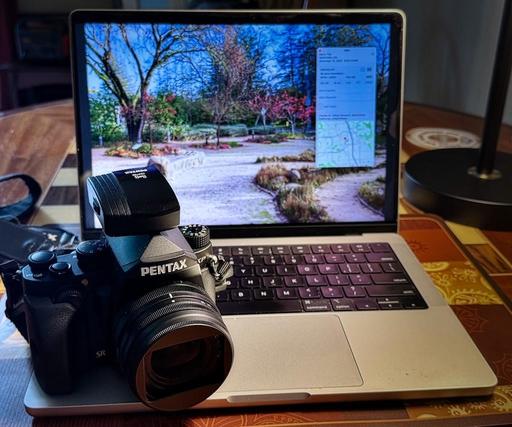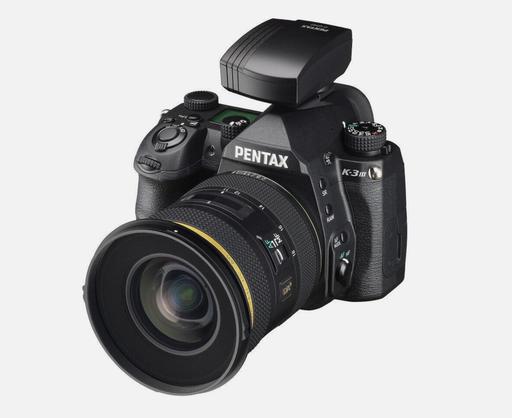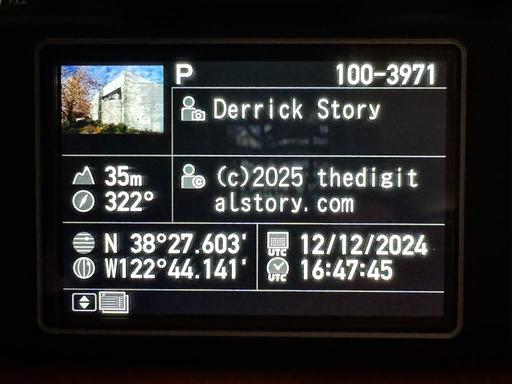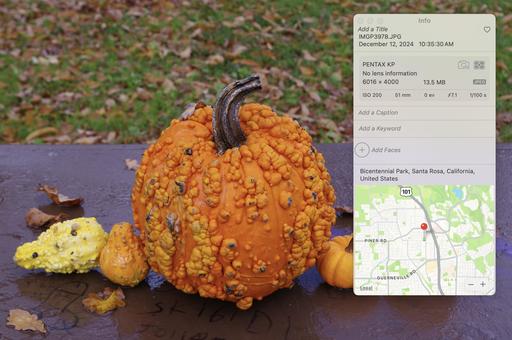 Pentax KP DSLR with Pentax/Ricoh GPS Receiver.
Pentax KP DSLR with Pentax/Ricoh GPS Receiver.
With the exception of the Olympus OM-D E-M1X, most mirrorless cameras want you to connect to a smartphone app to geotag your images. This is fine if A) the app works reliably, and B) you practice using it and remember how to use it.
I've had mixed results with the smartphone connection over the years. My Fujifilm X100V works well with the X App. My Nikon Zf does a pretty good job with Snapbridge. And my Olympus OM-1 is difficult to use for geotagging with its smartphone companion, O.I. Share.
For my upcoming Costa Rica trip, I was searching for an easy, reliable way to add location data to my pictures without straining my camera or iPhone batteries (not to mention my patience). The answer harkened back to the days of DSLRs - a GPS receiver that slides into the camera's hotshoe.
 Pentax GPS receiver on a K3 III DSLR.
Pentax GPS receiver on a K3 III DSLR.
The advantage of this approach is that the receiver is powered by its own AAA battery and doesn't require interaction with a smartphone. It talks directly to the camera through the hotshoe contacts and adds a wealth of data to each shot recorded.
 The LCD from my Pentax KP in playback mode displaying lots of location information.
The LCD from my Pentax KP in playback mode displaying lots of location information.
When I load the images into any of my photo management apps, the recorded geotags are translated into location information.
 This shot was captured in Bicentennial Park with the Pentax KP. How do I know? The data tells me so.
This shot was captured in Bicentennial Park with the Pentax KP. How do I know? The data tells me so.
Here's what Ricoh says about their O-GPS1 unit:
Simply by mounting the O-GPS1 accessory GPS unit onto the hotshoe of a PENTAX digital SLR camera, you can record the latitude, longitude, altitude, universal time coordinated (UTC), and aspects of shooting locations onto captured images. Image files carrying GPS location data can be used to track shooting locations and review location data on a computer. The GPS location data stored on these files also makes it much easier to sort and file recorded images. By coupling GPS location data with the camera's SR (Shake Reduction) system, this GPS unit offers a range of innovative, PENTAX-original applications, including ASTROTRACER, Simple Navigation and Electronic Compass.
I'm definitely taking the Pentax KP to Costa Rica. The camera, lenses, and GPS unit are all weather-resistant - perfect for damp, rainy conditions. And I'll be able to record location information with each shot I take.
And if Nikon decides to make a separate GPS receiver for my Zf, I'll buy it. In the meantime, it looks like I will be leaning on my DSLR too.











